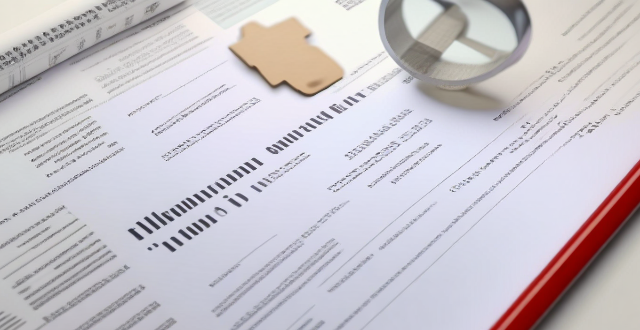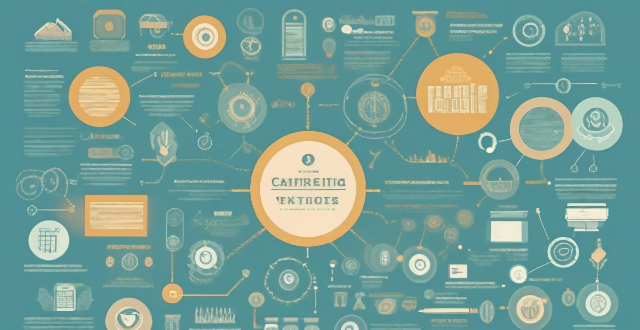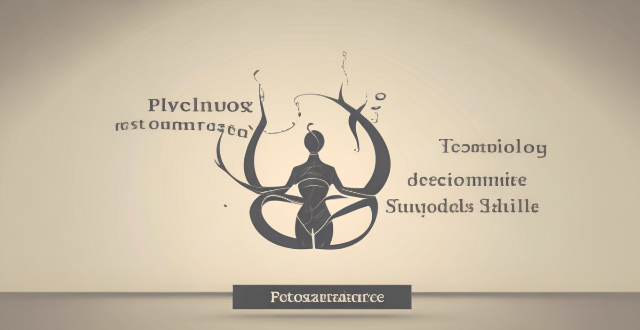Drill Technique

How can we measure the success of a safety drill ?
The article discusses the importance of evaluating safety drills to improve emergency response and preparedness. Key factors to consider include compliance with safety procedures, participant engagement, effectiveness of communications, availability and functionality of equipment and resources, and overall performance. By measuring the success of a safety drill, organizations can identify areas for improvement and ensure that their employees are well-prepared to handle emergency situations effectively.

What should be included in a safety drill report ?
In summary, a safety drill report is an essential document that provides a detailed account of the findings and outcomes of a safety drill conducted in an organization or facility. It includes key elements such as header information, purpose of the drill, participation details, drill procedures, performance assessment, findings & recommendations, and conclusion. The report also includes attachments and supporting documents such as photos/videos, attendance records, and emergency contact information. By incorporating these elements into a comprehensive safety drill report, organizations can effectively evaluate their readiness to handle emergencies and continuously improve their safety protocols.

What is a safety drill and why are they important ?
A safety drill is a crucial practice session that simulates emergency situations to prepare individuals and organizations for potential emergencies by practicing evacuation procedures, using safety equipment, and following established protocols. Safety drills are important for several reasons: they familiarize people with emergency procedures, identify weaknesses in current plans, ensure compliance with regulations, maintain readiness, and promote a culture of safety.

What are the key steps in performing an earthquake drill at home ?
Earthquake drills are crucial for preparing your family to react quickly and safely during an actual earthquake. Here are the key steps to perform an effective earthquake drill at home: 1. **Preparation**: Inform family members about the purpose of the drill, assign roles, identify safe places, and secure objects. 2. **Drop, Cover, and Hold On**: Drop to your hands and knees, crawl to a safe place, and hold on until the shaking stops. 3. **Relocation Drill**: Practice evacuating safely, agree on a meeting spot, and check in with all family members. 4. **After the Drill**: Review performance, update the emergency plan, and stay informed about local warning systems. 5. **Repeat**: Conduct regular earthquake drills at least once every six months to keep procedures fresh in everyone's minds.

Are there any specific exercises or drills for skill improvement in basketball/football/tennis, etc. ?
Topic: Skill Improvement Exercises and Drills in Basketball, Football, and Tennis Basketball: - Dribble the ball with alternating hands and in a figure 8 motion to improve ball handling skills. - Practice shooting free throws and spot shooting to enhance accuracy and consistency. - Work on lateral movement and closeout drills to improve defensive positioning and quickness. Football (Soccer): - Pass the ball against a wall and in a triangle formation to improve passing accuracy and touch. - Practice shooting at targets and receiving passes before shooting to enhance shooting accuracy and speed. - Work on marking and tackling drills to improve defensive skills and technique. Tennis: - Hit crosscourt groundstrokes and alternate forehand and backhand shots to improve accuracy and consistency. - Practice serving to targets and focusing on second serves to enhance serving reliability and placement. - Work on lateral movement and net approach drills to improve court coverage and net play.

How often should safety drills be conducted in the workplace ?
Regular safety drills are essential for maintaining a safe workplace. The frequency of these drills depends on the type of emergency and local regulations, but they should be frequent enough to keep employees prepared and confident in their ability to handle emergencies. Best practices for safety drills include creating realistic scenarios, encouraging employee involvement, gathering feedback, and documenting each drill.

What is the proper breathing technique while running ?
Proper breathing technique is crucial for runners to improve performance, reduce fatigue, and prevent injuries. Diaphragmatic breathing involves taking deep breaths using the diaphragm muscle for efficient oxygen exchange. Rhythmic breathing matches breathing rhythm to stride pattern, promoting even and consistent breathing. Nasal breathing warms and humidifies air, but mouth breathing can be used when necessary. Relaxation and good posture are also important for optimal breathing mechanics. Incorporating these techniques into your running routine can enhance your overall running experience.

What is the Pomodoro Technique and does it really work for enhancing focus ?
The Pomodoro Technique is a time management method designed to improve focus and productivity. It involves working for 25 minutes followed by a short break, with longer breaks after every four Pomodoros. The technique aims to enhance concentration, manage time effectively, reduce procrastination, and boost overall productivity. However, its effectiveness can vary based on individual adaptability and workflow.

How do safety drills help identify potential hazards in the workplace ?
Safety drills are crucial exercises to simulate and identify potential hazards in the workplace. They help highlight weak links in safety procedures, test equipment and infrastructure, enhance visibility of hazardous areas, train for unexpected circumstances, and promote a culture of safety. By conducting regular drills, organizations can reduce accidents and ensure a safer environment for employees.

Are there any specific exercises or stretches that can help improve my golf game ?
Golf improvement through specific exercises and stretches, including core strengthening exercises like plank and Russian twists, flexibility and mobility stretches such as hamstring and hip flexor stretches, and putting practice drills like the line and gate drills to enhance precision and control.

Can you provide examples of different types of safety drills ?
Safety drills are essential exercises designed to prepare individuals and organizations for emergencies. They help ensure that everyone knows what to do in case of an unexpected event, reducing the risk of injury or loss of life. Here are some examples of different types of safety drills: 1. Fire Drills: Alerting occupants of the building by sounding alarms, guiding them to exit routes and assembly points, ensuring that all areas are cleared, conducting a headcount to account for all individuals. 2. Earthquake Drills: "Drop, Cover, and Hold On" procedure to protect oneself from falling objects, evacuating the building only if it is safe to do so, knowing how to turn off utilities like gas and water to prevent further damage. 3. Active Shooter Drills: Knowing the "Run, Hide, Fight" strategy, how to report an active shooter situation to authorities, safe evacuation techniques without drawing attention to oneself. 4. Chemical Spill or Hazmat Incident Drills: Proper use of personal protective equipment (PPE), safe evacuation procedures, reporting the incident to emergency services, decontamination procedures for those who may have been exposed. 5. Medical Emergency Drills: Basic Life Support (BLS) and CPR techniques, use of automated external defibrillators (AEDs), first aid kit usage and management of injuries until professional help arrives.

How can I improve my breathing technique while swimming ?
Improving your breathing technique while swimming is crucial for better performance and endurance. Understand basics, practice proper rhythm, use core muscles, work on exhalation, do dryland training, visualize success, and seek professional guidance to enhance breathing and overall swimming skills.

How does proper handwashing technique prevent the spread of germs ?
Proper handwashing is a simple yet effective way to prevent the spread of germs. It involves using soap and water to clean your hands thoroughly, especially before eating or preparing food, after using the restroom, and after being in contact with someone who is sick. The key points on how proper handwashing technique can help prevent the spread of germs include: - Wet your hands with clean, running water (warm or cold), turn off the tap, and apply soap. - Lather your hands by rubbing them together with the soap. Be sure to lather the backs of your hands, between your fingers, and under your nails. - Scrub your hands for at least 20 seconds. Need a timer? Hum the "Happy Birthday" song from beginning to end twice. - Rinse your hands well under clean, running water. - Dry your hands using a clean towel or air dry them. By following these steps, you can effectively remove dirt, viruses, and bacteria from your hands, which can help prevent the spread of germs that cause infections like the common cold and flu. Additionally, proper handwashing technique can also help prevent the spread of more serious illnesses such as COVID-19, Ebola, and norovirus.

How can we ensure employee participation during safety drills ?
Strategies for ensuring employee participation during safety drills include clearly communicating the importance of these exercises, making them engaging and interactive, offering incentives for participation, and creating a supportive workplace culture. By implementing these strategies, employees are more likely to actively participate in safety drills, leading to improved preparedness for emergencies and a safer workplace overall.

What are some tips for avoiding distractions while working on important tasks ?
To avoid distractions while working on important tasks, create a distraction-free environment by turning off your phone, closing unnecessary applications, and finding a quiet place. Set clear goals and priorities, use time management techniques like the Pomodoro Technique, minimize interruptions by informing others about your schedule, stay organized with tools like calendars and planners, and take care of yourself by getting enough sleep and taking regular breaks.

What are some common tools and techniques used in risk management ?
Risk management is a process that involves identifying, assessing, and prioritizing potential risks. There are various tools and techniques used in risk management, including brainstorming, Delphi method, checklists, qualitative and quantitative assessment, risk matrix, cost-benefit analysis, avoidance, reduction, transference, acceptance, continuous monitoring, and audits. These tools and techniques help organizations and individuals manage risks effectively and make informed decisions.

What are the key self-assessment techniques for personal growth ?
Self-assessment techniques help identify strengths, weaknesses, and areas for improvement. Key methods include reflecting on past experiences, setting goals and tracking progress, seeking feedback from others, keeping a journal or diary, and practicing mindfulness and self-awareness. These techniques provide different perspectives and help individuals understand their personal growth over time.

How can I improve my reaction time and agility in sports ?
Reaction time and agility are essential components of athletic performance, determining how quickly an individual can respond to a stimulus and move their body effectively. To improve these skills, one should practice specific drills such as the reaction time ladder, cone weave, and box jumps. Incorporating strength training exercises like squats, lunges, deadlifts, and plyometric exercises can also enhance overall athleticism. Additionally, focusing on flexibility and mobility through stretches and foam rolling can reduce the risk of injury and improve range of motion. By implementing these strategies, individuals can enhance their reaction time and agility in sports.

What are some common mistakes people make when learning to swim ?
When learning to swim, common mistakes include forgetting to breathe properly, tensing up too much, not using proper technique, and overestimating abilities. To avoid these mistakes, focus on deep breathing exercises, relaxing your body, seeking guidance from a qualified instructor, and staying within your comfort zone. With patience, practice, and proper technique, beginners can improve their skills and enjoy a safer and more enjoyable swimming experience.

What are some popular celebrity makeup techniques ?
Makeup techniques used by celebrities often set trends and become popular among the general population. Here are some of the most popular celebrity makeup techniques: 1. Contouring involves using makeup to create shadows and highlights on the face, which can help define features and enhance facial structure. This technique is often used by celebrities to achieve a more chiseled look. 2. Baking is a makeup setting technique where you apply a thick layer of translucent powder under the eyes and on high points of the face, let it sit for 5-10 minutes, and then brush it off. This technique helps to set the foundation and concealer, making them last longer. 3. Celebrities often opt for glossy lips to add a pop of color and make their lips appear fuller. This trend has been popularized by stars like Kylie Jenner and Rihanna. 4. Full, bold eyebrows have been in style for several years now, thanks to celebrities like Cara Delevingne and Lily Collins who have sported natural-looking, full brows. 5. Achieving a dewy, glowing complexion is another popular celebrity makeup technique. Stars like JLo and Kim Kardashian are known for their radiant skin. 6. Graphic eyeliner is a bold look that involves creating sharp, defined lines on the eyes. Celebrities like Bella Hadid and Kendall Jenner have made this trend popular.

What are the basic techniques used in Chinese cooking ?
Chinese cuisine is known for its diverse flavors and cooking techniques. Here are some of the basic techniques used in Chinese cooking: 1. Stir-frying involves quickly frying small pieces of food in a wok or frying pan over high heat. The key to successful stir-frying is to use hot oil, fresh ingredients, and constant motion to prevent burning. 2. Steaming involves placing food in a steamer basket over boiling water and allowing it to cook through steam. This method is often used for dumplings, buns, fish, and vegetables. 3. Braising is a slow-cooking method that involves simmering meat or vegetables in liquid until they become tender and flavorful. This technique is often used for stews, soups, and braises. 4. Deep-frying involves submerging food in hot oil until it becomes crispy and golden brown. This technique is often used for fried rice, spring rolls, and tempura dishes. 5. Roasting involves cooking food in an oven at high temperatures until it becomes caramelized and tender. This technique is often used for roasted meats, vegetables, and baked goods like mooncakes and egg tarts.

Can sports psychology techniques be applied to non-athletes for general well-being ?
Sports psychology techniques can improve non-athletes' well-being by setting goals, visualizing success, using positive self-talk, practicing mindfulness, and relaxation techniques.

Is strength training safe for beginners ?
Strength training is a form of exercise that can provide numerous benefits, including increased muscle mass and strength, improved bone density, better body composition, reduced risk of injury, and enhanced athletic performance. However, it is essential to take safety measures to prevent injuries from improper technique or overexertion. Before starting any new exercise program, consult with a healthcare professional to ensure that you are healthy enough to participate. Start slowly and gradually increase intensity, focus on proper technique, warm up and cool down properly, and listen to your body. By following these tips, beginners can safely start strength training and enjoy its many benefits while minimizing the risk of injury.

What are some creative composition techniques for iPhone photography ?
Creative composition techniques for iPhone photography include the rule of thirds, leading lines, symmetry and patterns, frame within a frame, filling the frame, rule of odds, negative space, motion blur, playing with perspective, and using color and contrast. These techniques help create more balanced and interesting photos, draw attention to the subject, and add visual interest. By incorporating these techniques into iPhone photography, stunning images can be captured that stand out from the crowd.

What tools do I need for basic home repairs ?
Basic Home Repairs Toolkit: Essential Tools for Common Household Tasks When it comes to basic home repairs, having the right tools is essential. Here are some of the most important tools you should have on hand for common household tasks: 1. Screwdrivers: Flathead and Phillips head screwdrivers for general use and assembling furniture. 2. Pliers: Needle-nose and slip-joint pliers for gripping and bending wires and cutting and gripping various materials. 3. Wrenches: Adjustable wrench and crescent wrench set for tightening and loosening nuts and bolts of various sizes. 4. Hammer: Claw hammer for driving nails and removing them from wood. 5. Tape Measure: Retractable tape measure for measuring distances and ensuring accuracy in cuts and installations. 6. Level: Torpedo level and carpenter's square for checking if objects are horizontally level and angles are square and true. 7. Handsaw: Hacksaw and keyhole saw for cutting through metal, plastic, or wood and making small, precise cuts in drywall or wood. 8. Drill/Driver: Cordless drill/driver with assorted drill bits and screw tips for drilling holes and driving screws into various materials. 9. Staple Gun: Manual staple gun for upholstery, fabric, and light duty fastening tasks, and electric staple gun for heavy-duty fastening tasks like installing flooring or ceiling tiles. 10. Utility Knife: Retractable utility knife for cutting open boxes, trimming materials, or scoring surfaces before snapping them apart. By having these basic tools on hand, you can tackle many common home repair projects with confidence and efficiency. Remember to keep your tools organized, clean, and properly maintained for safe and effective use.

Are there any breathing techniques that can help reduce stress ?
Breathing techniques are a simple yet powerful tool for reducing stress levels and promoting relaxation. By practicing these techniques regularly, you can improve your overall well-being and reduce the negative effects of stress on your body and mind. Some effective breathing techniques for stress reduction include deep breathing, diaphragmatic breathing, alternate nostril breathing, and box breathing. These techniques help to increase oxygen flow to the brain, relax the body, balance the left and right hemispheres of the brain, and slow down the heart rate. Remember to focus on your breath and try to clear your mind of any distractions while practicing these techniques.

What are some effective techniques for improving concentration and focus ?
Concentration and focus are crucial skills for achieving goals, whether it's studying, working, or enjoying a hobby. Here are some effective techniques to improve them: minimize distractions by turning off notifications and finding a quiet place; take short breaks every hour or use the Pomodoro technique; practice mindfulness through meditation and deep breathing; set clear goals and prioritize tasks; eliminate multitasking and focus on one task at a time; get enough sleep and create a relaxing bedtime routine; exercise regularly to enhance cognitive function; stay hydrated to avoid fatigue; use visual cues like charts and diagrams; and limit caffeine intake to avoid jittery feelings.

Is it possible to read a book in one day using speed reading techniques ?
Speed reading is a technique that allows you to read faster than your normal reading speed. While it can be helpful for quickly reviewing material or getting an overview of a topic, it may not be suitable for all types of books. The pros and cons of speed reading are discussed, as well as tips for effectively using this technique. Ultimately, the decision to use speed reading should be based on personal preferences and goals, as well as the type of book being read.

Can sport psychology counseling be beneficial for non-athletes as well ?
Sport psychology counseling can be beneficial for non-athletes as well. The techniques used in sport psychology, such as cognitive restructuring, relaxation training, and visualization, can help individuals manage stress, anxiety, and depression. Additionally, these techniques can enhance performance in various areas of life, develop better coping skills, and increase self-awareness. By applying the principles and techniques used in sport psychology to everyday life situations, individuals can improve their mental health, enhance their performance, develop better coping skills, and increase their self-awareness.

Are there any proven scientific strategies for enhancing memory recall ?
Memory recall is the ability to retrieve information from our memory. It is an essential aspect of learning and can be improved through various scientific strategies. Here are some proven methods for enhancing memory recall: 1. **Active Learning**: Engaging with the material you want to remember, such as reading aloud, taking notes, or teaching others. 2. **Mnemonic Devices**: Techniques that help you remember information by associating it with something easier to remember, like acronyms, visual imagery, or rhymes. 3. **Spaced Repetition**: A learning technique that involves reviewing information at increasing intervals over time, using tools like flashcards or online tools. 4. **Elaborative Interrogation**: Asking yourself "why" questions about the material you are trying to remember to deepen your understanding and retention. 5. **Chunking**: Grouping related pieces of information together into larger, more manageable chunks to reduce cognitive load and make it easier to remember complex information. 6. **Sleep and Rest**: Getting enough sleep and taking breaks while studying can improve memory recall by allowing the brain to consolidate memories and prevent burnout. By incorporating these techniques into your study routine, you can improve your ability to retain and retrieve information from your memory.